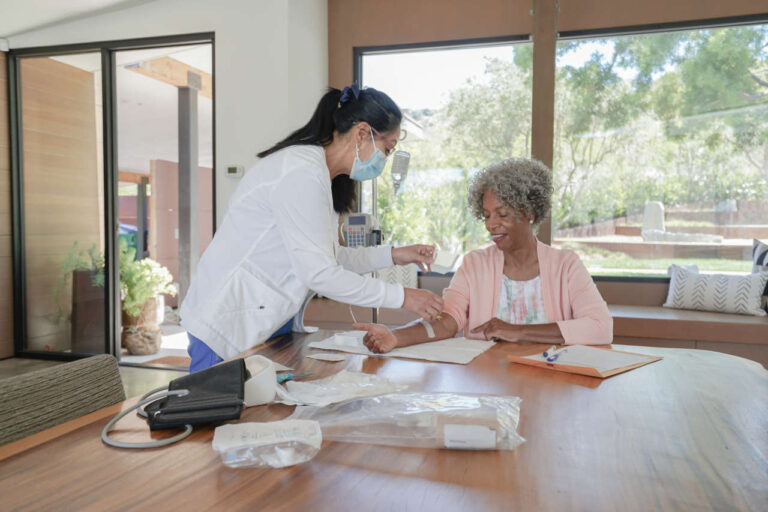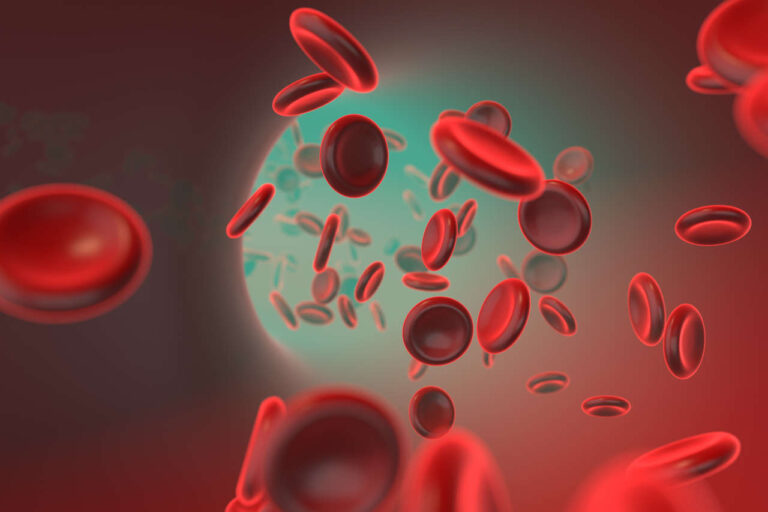
IVIG đối với bệnh viêm não tủy lan tỏa cấp tính (ADEM) là phương pháp điều trị hiệu quả thứ hai khi corticosteroid không đủ hiệu quả hoặc bệnh nhân không thể dùng thuốc do một số tình trạng bệnh lý.
Hỏi về dịch truyền IVIG tại nhà
Tổng quan nhanh về bệnh viêm não tủy lan tỏa cấp tính
Viêm não tủy lan tỏa cấp tính (ADEM) là một rối loạn tự miễn dịch đột ngột và nghiêm trọng, gây tổn thương lớp màng bảo vệ bao quanh các sợi thần kinh.
Quá trình hệ miễn dịch gây tổn thương lớp phủ được gọi là mất myelin. Ở những người mắc ADEM, tình trạng mất myelin xảy ra ở não và tủy sống. Hiếm khi, các dây thần kinh thị giác (mang tín hiệu từ võng mạc đến não) có thể bị ảnh hưởng.
Tình trạng mất myelin thường xảy ra sau khi bị nhiễm trùng do vi khuẩn hoặc virus. Trẻ em có nguy cơ mắc bệnh này cao hơn người lớn.
ADEM là một tình trạng hiếm gặp. Tổ chức Quốc gia về Rối loạn Hiếm gặp (NORD) ước tính 0,07 đến 0,09 ca mới trên 100.000 trẻ em [1]. Số ca bệnh mới trong dân số nói chung vẫn chưa được biết.
Một tên gọi khác của tình trạng này là viêm não tủy sau nhiễm trùng.
ADEM không di truyền, nhưng các yếu tố di truyền có thể khiến bạn có nhiều khả năng mắc bệnh này hơn.
Viêm não tủy lan tỏa cấp tính được điều trị như thế nào?
Không có phương pháp điều trị nào được chấp nhận rộng rãi cho ADEM và FDA Hoa Kỳ chưa có phương pháp điều trị cụ thể nào được chấp thuận.
Bác sĩ chăm sóc sức khỏe của bạn thường sẽ bắt đầu bằng corticosteroid tiêm tĩnh mạch liều cao và chăm sóc hỗ trợ. Corticosteroid (phương pháp điều trị đầu tay) có thể giúp giảm viêm não và tủy sống.
Chăm sóc hỗ trợ có thể bao gồm [2]:
- Các biện pháp quản lý đường thở (một số bệnh nhân có thể cần máy để thở)
- Thuốc kháng sinh giúp chống nhiễm trùng
- Thuốc chống co giật
- Duy trì cân bằng chất lỏng và điện giải
- Thuốc ngăn ngừa cục máu đông ở chân
Khi corticosteroid không có tác dụng như mong muốn, bác sĩ chăm sóc sức khỏe sẽ điều trị cho bạn bằng phương pháp trao đổi huyết tương (plasmapheresis) hoặc IVIG.
IVIG điều trị viêm não tủy lan tỏa cấp tính: Cơ chế hoạt động như thế nào?
Cơ chế chính xác vẫn chưa được biết rõ. Các chuyên gia y tế tin rằng IVIG có thể hoạt động trong ADEM bằng cách:
- Giảm sản xuất protein (globulin miễn dịch hoặc kháng thể) gây tổn thương não và tủy sống
- Tăng tốc quá trình phân hủy globulin miễn dịch
- Ngăn chặn hệ thống miễn dịch hình thành các phức hợp miễn dịch có hại (liên kết kháng thể với các hạt gây bệnh)
Nhận hỗ trợ tài chính cho IVIG
Khi nào bạn nên tiêm IVIG để điều trị bệnh viêm não tủy lan tỏa cấp tính?
IVIG không phải là phương pháp điều trị chính cho ADEM và chỉ có thể được cân nhắc trong một số điều kiện nhất định:
- Khi corticosteroid tiêm tĩnh mạch không kiểm soát được các triệu chứng ADEM
- Khi một số bệnh nhân không thể dung nạp corticosteroid liều cao do một số tình trạng bệnh lý nhất định
- Khi corticosteroid có thể làm tình trạng bệnh trở nên tồi tệ hơn ở những bệnh nhân ADEM cũng bị viêm não màng não (viêm não và lớp màng bao phủ não)
- Khi trao đổi huyết tương (phương pháp điều trị thứ hai) không hiệu quả
IVIG điều trị bệnh viêm não tủy lan tỏa: Hiệu quả như thế nào?

Một số báo cáo ca bệnh cho thấy IVIG có thể là phương pháp thay thế hiệu quả cho corticosteroid.
Ví dụ, trong một báo cáo ca bệnh năm 1995, các nhà điều tra đã mô tả một bé trai 11 tuổi bị ADEM, đáp ứng trong vòng 24 giờ với IVIG. Bệnh nhân được truyền IVIG 400 mg/kg mỗi ngày trong 5 ngày [3].
Ngoài ra, một nghiên cứu năm 1999 đã báo cáo về sự phục hồi hoàn toàn ở hai trẻ em (cả hai đều dưới 10 tuổi) được tiêm 2 g/kg IVIG trong 5 ngày [4].
Tương tự, một nghiên cứu trường hợp năm 2019 đã báo cáo một phụ nữ 30 tuổi đã hồi phục hoàn toàn sau khi được điều trị kịp thời bằng corticosteroid liều cao và IVIG. Bệnh nhân được tiêm IVIG 0,4 g/kg trong 7 ngày [5].
Theo hướng dẫn của Cơ quan Máu Quốc gia Úc, đã xem xét nhiều báo cáo trường hợp, phương pháp điều trị IVIG tuyến hai có thể dẫn đến phục hồi hoàn toàn ở [6]:
- Trẻ em mắc ADEM đơn pha (xảy ra một lần trong đời)
- Trẻ em bị ADEM tái phát (bệnh tái phát nhiều lần)
- Trẻ em bị ADEM tái phát ban đầu được điều trị bằng IVIG trong vòng sáu tháng trước
Hướng dẫn của Canada khuyến cáo sử dụng IVIG cho bệnh viêm não tủy lan tỏa cấp tính khi liệu pháp steroid thất bại. Liều IVIG được đề cập trong hướng dẫn như sau [7]:
- Cảm ứng: 2 g/kg trọng lượng cơ thể đã điều chỉnh chia đều trong 2 đến 5 ngày
- BẢO TRÌ (chỉ dành cho ADEM tái phát): 0,4 đến 2 g/kg trọng lượng cơ thể đã điều chỉnh sau mỗi 4 đến 6 tuần
Kết hợp Corticosteroid và IVIG
Chỉ trong những trường hợp nghiêm trọng, bác sĩ mới có thể đề nghị kết hợp corticosteroid và IVIG. Tuy nhiên, vẫn chưa rõ liệu việc này có mang lại lợi ích bổ sung nào hay không.
Ngoài ra còn có báo cáo về các nhà cung cấp dịch vụ chăm sóc sức khỏe thực hiện trao đổi huyết tương với corticosteroid liều cao trong các trường hợp ADEM nghiêm trọng.
Các phương pháp điều trị tuyến hai khác
Bệnh nhân bị ADEM nặng hoặc kháng steroid có thể được điều trị bằng các phương pháp điều trị tuyến hai khác như cyclophosphamide hoặc rituximab.
Nói chuyện với một chuyên gia
Về Trợ cấp đồng thanh toánNhững thách thức khi sử dụng IVIG cho bệnh viêm não tủy lan tỏa cấp tính
Mặc dù có kết quả khả quan trong các nghiên cứu nhỏ ban đầu, vẫn còn một số thách thức hạn chế việc sử dụng IVIG cho bệnh viêm não tủy lan tỏa cấp tính, bao gồm:
- Thiếu các thử nghiệm có kiểm soát trên người quy mô lớn
- Thời điểm điều trị (bắt đầu IVIG ngay lập tức hay đợi cho đến khi corticosteroid không còn tác dụng)
- Hướng dẫn liều dùng
Mặc dù những phát hiện ban đầu cho thấy IVIG có thể tăng tốc độ phục hồi ban đầu, nhưng vẫn chưa rõ liệu IVIG có thể ảnh hưởng đến thời gian hoặc mức độ phục hồi hoàn toàn hay không.
Các yếu tố khác có thể hạn chế việc sử dụng IVIG cho bệnh viêm não tủy lan tỏa cấp tính bao gồm nồng độ cao chi phí điều trị IVIG và tiếp cận IVIG.
Trao đổi huyết tương so với IVIG trong điều trị viêm não tủy lan tỏa cấp tính
Cả hai trao đổi huyết tương và IVIG là phương pháp điều trị hiệu quả thứ hai. Tuy nhiên, trao đổi huyết tương thường được coi là phương pháp ưu việt hơn.
Thay huyết tương có thể ít rủi ro hơn và tỷ lệ biến chứng thấp hơn. Ngoài ra, phương pháp này thường tiết kiệm chi phí hơn cho bệnh nhân.
Những câu hỏi thường gặp
Làm thế nào để điều trị bệnh viêm não tủy cấp tính lan tỏa?
Có nhiều phương pháp điều trị viêm não tủy lan tỏa cấp tính, bao gồm corticosteroid liều cao tiêm tĩnh mạch, IVIG và thay huyết tương.
Phương pháp điều trị đầu tiên cho ADEM là gì?
Corticosteroid tiêm tĩnh mạch liều cao là liệu pháp điều trị đầu tay cho ADEM.
Quy trình điều trị ADEM là gì?
Phác đồ điều trị corticosteroid chuẩn cho ADEM là tiêm tĩnh mạch methylprednisolone ở liều 20 – 30 mg/kg/ngày (tối đa 1 g/ngày) trong 3 đến 5 ngày, sau đó giảm dần (giảm liều dần dần) bằng prednisone uống trong 4 đến 6 tuần.
TÀI LIỆU THAM KHẢO:
- “Viêm não tủy cấp tính lan tỏa.” NORD (Tổ chức quốc gia về các rối loạn hiếm gặp), rarediseases.org/rare-diseases/acute-disseminated-encephalomyelitis/.
- Alexander, M, và JMK Murthy. “Viêm não tủy cấp tính lan tỏa: Hướng dẫn điều trị.” Biên niên sử của Viện Hàn lâm Thần kinh Ấn Độ, tập 14, Phụ lục 1 (2011): S60-4. doi:10.4103/0972-2327.83095
- Kleiman, M, và P Brunquell. “Viêm não tủy cấp tính lan tỏa: đáp ứng với globulin miễn dịch tiêm tĩnh mạch.” Tạp chí Thần kinh học Nhi khoa, tập 10,6 (1995): 481-3. doi:10.1177/088307389501000612
- Assa, A và cộng sự. “Viêm não thân não mất myelin đáp ứng với liệu pháp immunoglobulin tĩnh mạch.” Nhi khoa tập 104,2 Phần 1 (1999): 301-3. doi:10.1542/peds.104.2.301
- Repić-Buličić, Ana và cộng sự. “ĐIỀU TRỊ THÀNH CÔNG VIÊM NÃO TỦY PHÁT TÁN CẤP TÍNH (ADEM) BẰNG CÁCH SỬ DỤNG NHANH CHÓNG CÁC GLOBULIN MIỄN DỊCH – BÁO CÁO CA BỆNH VÀ TỔNG QUAN TÀI LIỆU.” Acta clinica Croatia tập 58,1 (2019): 173-179. doi:10.20471/acc.2019.58.01.22
- Quản lý Ig – Tiêu chí sử dụng immunoglobulin trong lâm sàng tại Úc. (nd). https://www.criteria.blood.gov.au/MedicalCondition/View/2611#
- Prairie Collaborative Immune Globulin Utilization Management Framework Project, et al. “Criteria for the Clinical Use of Immune Globulin.” Criteria for the Clinical Use of Immune Globulin, Second Edition, Alberta Ministry of Health, Shared Health Manitoba, and Saskatchewan Ministry of Health, Jan. 2022, www.ihe.ca/public/uploaded/Prairie%20Ig%20Final%20Guideline%2009.02.22.pdf.













